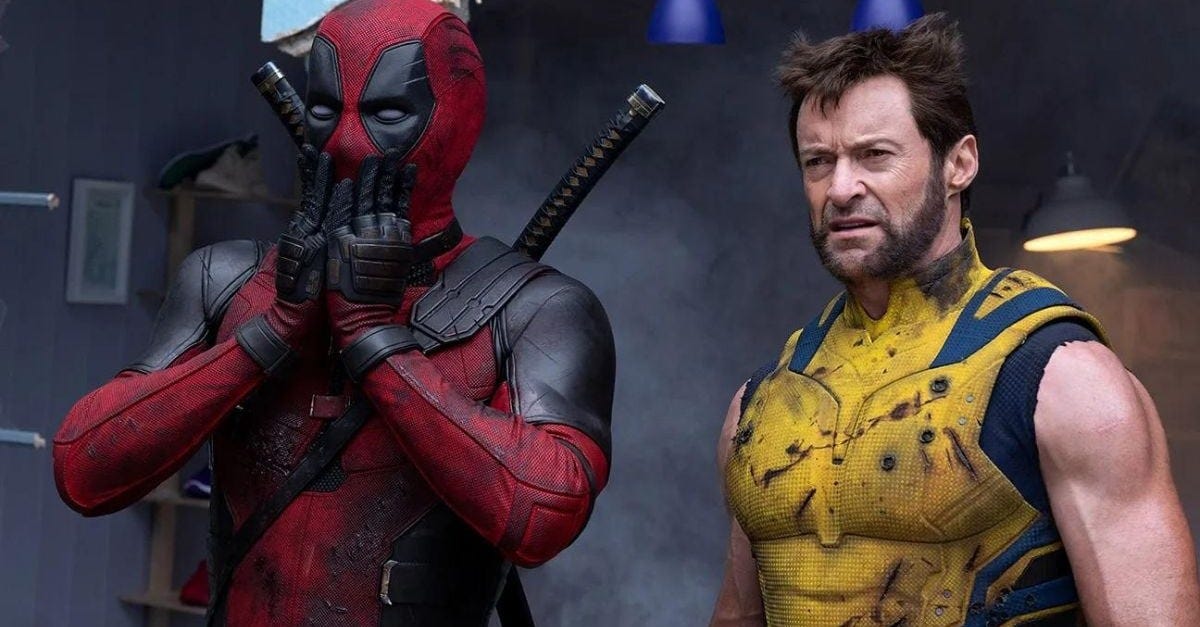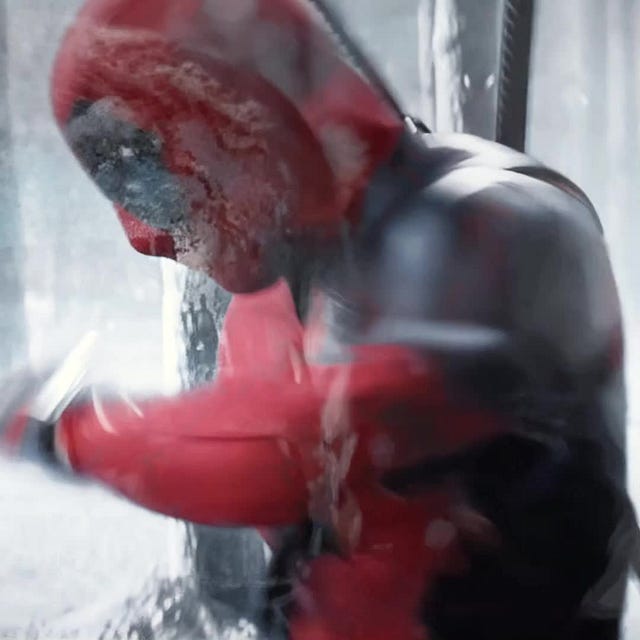Hollywood Breathes a Sigh of Relief with "Deadpool & Wolverine" Phenomenon
A billion-dollar box office hit is much-needed good news but may also warn of impending disaster.
“Is cinema dead?” That’s a question industry insiders and observers began asking when COVID-19 hit in early 2020, forcing theaters worldwide to close. Four years later, life has returned to normal, but the doubt lingers. Box office disappointments have become the norm, and attendance rates have yet to return to pre-pandemic levels. At this point, the answer seems clear: kind of.
For millions around the world, going to the cinema was an activity set on automatic mode —an easy weekend plan with friends, kids, or a date— but the COVID years marked a turning point. With the global rise of streaming, soaring ticket prices, and a perceived creativity crisis in Hollywood, many never returned to their movie-going routine. Still, now and then, a box-office smash comes along that reminds us of the earth-shattering power of a blockbuster.
Earlier this summer, Disney Pixar’s “Inside Out 2” had everyone running to their nearest theater, with social media abuzz over Pixar’s charismatic characters. Released in June, the movie is on track to cross $1.6 billion at the global box office.
Disney hit the jackpot again this month with the long-awaited release of “Deadpool & Wolverine,” the third installment in Ryan Reynolds’ “Deadpool” series. The addition of Wolverine—played by Hugh Jackman since the first “X-Men” live-action adaptation in 2000—was obviously a major draw. The movie rights to both characters, which are part of Marvel’s Mutant multiverse, belonged to 20th Century Fox. In the new film, they are finally integrated into the Marvel Cinematic Universe after Disney, which owns Marvel Studios, bought Fox’s entertainment portfolio in 2019.
To say that the public reaction has been enthusiastic would be an understatement: the tentpole crossed the $1-billion mark at the international box office after only three weeks.
“Deadpool & Wolverine” has become the second R-rated feature in history to reach the billion mark, after “Joker” (2019). Boosted by a release in the Chinese market, it’ll easily displace the former as the biggest R-rated movie ever. However, there’s a big caveat box-office analysts and Hollywood in general purposely overlook: these numbers are not adjusted for inflation.
In other words, if you take into account general attendance figures (which studios and trackers conveniently never reveal), “Deadpool & Wolverine” — and the majority of 21st-century releases — are not as historically significant as their box-office numbers suggest. But that’s how Hollywood plays the game, and entertainment journalists dutifully accept their rules when reporting the numbers. Which I find highly misleading, but oh well, that’s what capitalism demands: eternal growth. And if there's no room for growth, change the narrative, increase prices, and obscure data, so there's growth anyway.
Regardless, the fact that “Deadpool & Wolverine” is a tour de force is indisputable. And, like other recent blockbusters, its impact is felt beyond movie theaters as it resonates on social media and even on the music charts. The soundtrack incorporates pop/rock anthems from different decades, from Green Day’s “Good Riddance (Time of Your Life)” to Fergie’s “Glamorous”. Madonna’s “Like a Prayer” is prominently featured in one key action battles.
But what the public really responded to was the opening sequence, in which the title character does the iconic choreography from ‘Nsync’s “Bye Bye Bye.” Thanks to the humorous scene, the nostalgic classic reached Spotify’s global top 10 last week, over 24 years after its release. Much-needed good news for Justin Timberlake after his Hamptons DUI and the lackluster performance of his latest solo album.
Like Timberlake, Disney was eager for some positivity after a tough year. Last year marked the first time since 2014—pandemic years aside—that none of their releases crossed the billion-dollar mark. In fact, in 2023, most of their offerings underperformed. Now, the company finds itself back at the top with two consecutive billion-dollar films—a welcome relief for both Pixar and Marvel, which had been coming off a string of disappointments.
Pixar’s 2020 release “Onward” had its run cut short due to COVID, and the three subsequent animations — “Soul,” “Lucca” and “Turning Red” — went straight to streaming. Their return to the big screen — Toy Story’s spin-off “Lightyear” (2022) — was boycotted by conservatives for including a (very discreet) gay kiss, throwing controversy-cautious Disney into the dreaded culture war. Most importantly, ticket sales were terrible. 2023’s “Elemental” showed some improvement but its $495 million cume was still far from Pixar’s glory days.
Meanwhile, after over a decade of blockbusters, Marvel was also hitting a rough patch. Marvel Studios CEO Kevin Feige seemed lost about what direction to take the integrated universe after the farewell of some of the most iconic characters in “Avengers: Endgame” (2019). The studio once flawless streak of successful big-screen comic book adaptations was interrupted by three flops: "Eternals" (2021), "Ant-Man and the Wasp: Quantumania" (2023), and "The Marvels" (2023). The launch of several streaming series designed to prop up the Disney+ streaming service left the integrated Marvel Cinematic Universe feeling overly convoluted. The 12 full-length series released since 2021, totaling 83 episodes, overwhelmed viewers. The once-revered cinematic universe began to feel more like a pyramid scheme.
The situation suddenly looks less grim, with a stacked summer for the studio. Opening the season, its 21st Century division, which deals with former Fox properties, had “Kingdom of the Planet of the Apes,” May’s highest-grossing release. Next week, a new film in the “Alien” series is poised to do well. With the exceptional reception of “Inside Out 2” and “Deadpool & Wolverine,” Disney proves that, despite recent missteps, their power remains unparalleled.
But there is cause for concern.
While Disney can still propel new cultural phenomenons (like 2021’s “Encanto”), there is an over-reliance on established IPs, which points to a broader industry issue. On one hand, Hollywood is a business, and money is money. But it was the creativity and innovation behind it that made it into a trillion-dollar juggernaut. Now, these once-key aspects are secondary. Part of giant media conglomerates, studios’ main goal is to keep shareholders and investors happy. And the best way to ensure positive returns is to make very safe bets.
That was on full display at D23, Disney’s annual fan convention held this weekend. Among the hyped announcements were “The Incredibles 3,” “Frozen 3,” “Toy Story 5,” “Zootopia 2,” and “Freaky Friday 2.” The studio also unveiled trailers for their next 2024 major releases: “Moana 2” and a “Lion King” live-action prequel.
A week prior, at San Diego Comic-Con, Disney made headlines with the announcement of Robert Downey Jr.'s coming back to the Marvel Cinematic Universe. Instead of reprising his iconic role as Iron Man, who heroically sacrificed himself to save humanity at the conclusion of the original Avengers series, Marvel’s most beloved leading man will take on the role of Dr. Doom in the newly announced “Avengers: Doomsday.” The studio is reportedly offering him one of the highest salaries in Hollywood history—over $100 million. Among Downey's demands was the Russo Brothers as directors, who are set to earn $60 million for their participation. The duo, known for directing “Captain America: The Winter Soldier” (2014), “Captain America: Civil War” (2016)) and the last two “Avengers” movies, is also returning to Marvel. With Robert Downey Jr. and the Russos on board, Disney has already invested $160 million into the project before production has even begun.
Indecent? Probably. Desperate? Definitely. Yet executives argue they’re simply giving audiences what they want. And they’re probably right. RDJ's Instagram post announcing his return garnered 20 million likes.
It seems moviegoers crave familiarity above all else. Besides “Inside Out 2” and “Deadpool & Wolverine,” the top 10 Hollywood movies of the year so far are “Despicable Me 4,” “Dune: Part Two,” “Godzilla x Kong: The New Empire,” “Kung Fu Panda 4,” the fourth installment in the Will Smith/Martin Lawrence “Bad Boys” series, “Kingdom of the Planet of the Apes,” “Twisters” (a standalone sequel to 1996’s “Twister”), and the third film in the “A Quiet Place” series. In sum, there’s no original movie in sight. The promising bets for the next few months are either sequels (“Joker 2: Follie à Deux,” “Moana 2,” “Beetlejuice Beetlejuice,” “Gladiator II”) or part of beloved franchises (“Wicked,” “The Lord of the Rings: The War of the Rohirrim,” “Mufasa: The Lion King”).
Hollywood finds itself in a Catch-22. To avoid box office flops, it clings to sequels and popular IPs, which in turn contributes to the very issue that’s causing audience fatigue: a lack of innovation and excitement.
But in the short term, there are reasons to celebrate. With “Deadpool & Wolverine,” there’s a new billion-dollar tentpole—one that can keep spawning countless sequels and spin-offs. This financial triumph demonstrate that, as a business, (some) Hollywood movies are safe. However, Hollywood cinema, as an art form, is in danger. By losing a crucial component of its history-making success, the industry may pay a steep price in the long run.
THE NUMBERS
After three weeks, “Deadpool & Wolverine”’s domestic (US+Canada) box office stands at $494.3 million. As per Deadline, its top 10 international markets are China ($54.8M), UK ($54.4M), Mexico ($38.2M), Australia ($31.3M), Germany ($25.5M), France ($23.6M), Brazil ($22.1M), Spain ($18.9M), India ($17.9M) and Italy ($15.6M). Its worldwide total so far is $1,029,531,382.
After two months, “Inside Out 2” has reached $636.457 million at the US and Canadian box office. According to Box Office Mojo, its top 10 international markets are Mexico ($101.165M), Brazil ($78.48M), the UK ($66.87M), South Korea ($59.8M), France ($57.6M), Italy ($48.1M), Germany ($46.7M), Spain ($45.8M), Australia ($34.66M), and Argentina ($29.39M). Its worldwide total so far is $1,593,756,948.
Both movies production budget is reported to be $200 million before marketing and other expenses.






